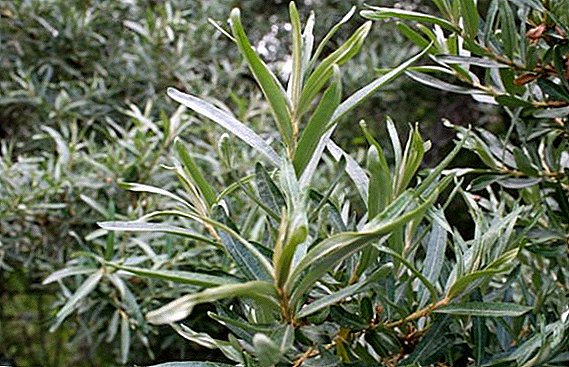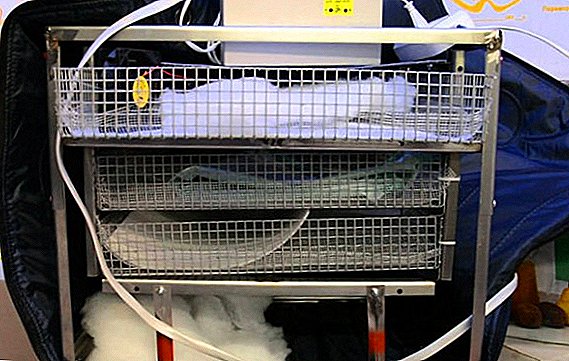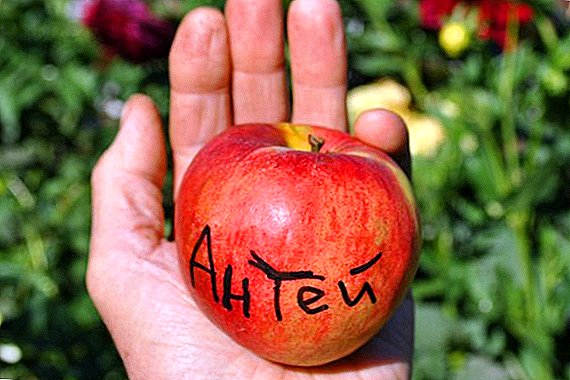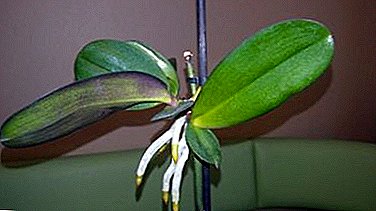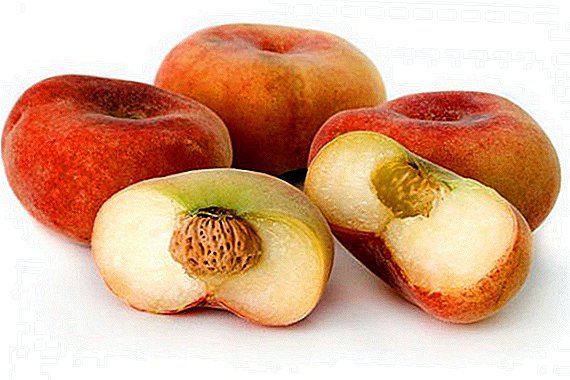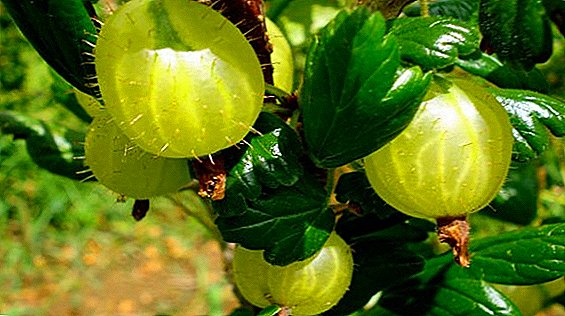 Usually gooseberry bushes that grow in one place for a long time, powdery mildew sooner or later affects. Not every gardener will decide to get rid of such a bush, especially if it is a rare and tasty variety. Therefore, the actual question is how to get rid of powdery mildew.
Usually gooseberry bushes that grow in one place for a long time, powdery mildew sooner or later affects. Not every gardener will decide to get rid of such a bush, especially if it is a rare and tasty variety. Therefore, the actual question is how to get rid of powdery mildew.
There are many different ways to beat this fungus. Some of them are based on folk methods, for others the use of chemicals is recommended. What of the proposed choose, decide the gardener.
Mealy dew: what it is, how the disease affects the yield of berries
 Determine the infection of the bush is simple. On the berries, a cobwebby friable white bloom is formed, which eventually develops into dense brown spots. Gradually, the fungus passes from the berries to shoots, bending them, and then to the leaves, which makes them turn yellow and curl.
Determine the infection of the bush is simple. On the berries, a cobwebby friable white bloom is formed, which eventually develops into dense brown spots. Gradually, the fungus passes from the berries to shoots, bending them, and then to the leaves, which makes them turn yellow and curl.
Berries begin to crack and crumble, even before ripening. If you do not take appropriate measures in time, the powdery mildew of the gooseberry will amaze and spoil the whole crop, and over time will destroy the whole plant.
Did you know? Gooseberry belongs to the same family. Its natural habitat is Western Europe and North Africa, although today it is distributed throughout the world. A wild plant settles in the forests and on the mountain slopes.
How to get rid of powdery mildew, country ways
It is necessary to fight the scourge immediately after detection. If the berries have already appeared, they are ruthlessly destroyed along with the affected shoots. If, however, it was possible to detect the disease before the buds were dissolved, it is necessary to take appropriate measures immediately.
Important! The fungus throws out spores twice a year: in spring and summer. Accordingly, it is necessary to process the bushes three times: before the flowers appear on the bush, immediately after flowering, and also before the bush leaves the leaves. The plant is not sprayed, and abundantly soaked. All litter is gathered around the bush, and the ground is treated with the same composition as the bush. All work is carried out in the evening.
How to beat powdery mildew? We offer several proven folk methods.
Using saltpeter
 To fight using different types of nitrate, but about the same proportion. So, for the treatment of the bushes after flowering do ammonium nitrate solution: on a bucket of water take 50 g of funds. Also used potassium nitrate together with potassium permanganate in a ratio of 50 g and 3 g per bucket of water.
To fight using different types of nitrate, but about the same proportion. So, for the treatment of the bushes after flowering do ammonium nitrate solution: on a bucket of water take 50 g of funds. Also used potassium nitrate together with potassium permanganate in a ratio of 50 g and 3 g per bucket of water.
Aspirin and soda
When white raids appear on the gooseberry bushes for spraying, they prepare a solution of soda with the addition of aspirin and soap. The last is necessary in order that means well adhered to a bush, lingering on it.
About 50-60 g of soda and about 10 g of liquid or grated laundry soap are taken on a bucket of water.. It is important that the solution is thick enough. It is necessary to spray every week two or three times.
How to remove white bloom on gooseberry with ash
Among the safest folk remedies for powdery mildew is considered wood ash solution. To prepare it, you need to take a kilogram of ash, clean it and sift. Then heat the bucket of water and dissolve the purified ash in it.
He must insist about a week, occasionally stirring. And on the last day they do not touch him, giving him the opportunity to settle well.
 Then it must be filtered, add household soap and use as intended. Processing bushes should be carried out in calm weather in the evening. Leave a little solution, add water to it and pour the bush.
Then it must be filtered, add household soap and use as intended. Processing bushes should be carried out in calm weather in the evening. Leave a little solution, add water to it and pour the bush.
Did you know? Today there are about one and a half thousand cultivated gooseberry varieties. Its berries contain vitamins, sugars, and useful acids. It is used both raw and made from it jam, marmalade, jelly, wine. Sometimes used for medical purposes..
Use kefir or sour milk
Surprisingly, but the struggle with powdery mildew folk remedies has in the stock such means as fermented milk products - sour milk and kefir.
The fact that their texture helps to create a kind of film on the plant, which interferes with the breathing of mycelium. At the same time, the gooseberry itself receives beneficial substances and improves its health.
To prepare the solution using lactic acid products and water in the ratio of 1:10. In this case, the bushes are treated only in dry weather. This must be done three times in three days.
Powdery mildew treatment with horsetail
Another folk remedy for powdery mildew on gooseberry - horsetail. To prepare the solution take 100 g of fresh plants and pour a liter of water.
A day later, the infusion is brought to a boil and boiled for a couple of hours. Then it must be cooled, drain. The concentrate is diluted with water 1: 5 and treated bushes.
 If you have to treat an already infected plant, it must be treated with this solution every five days for three or four cycles. However, the method is effective only at the initial stage of the disease. For the prevention of the treatment of bushes from powdery mildew in the spring.
If you have to treat an already infected plant, it must be treated with this solution every five days for three or four cycles. However, the method is effective only at the initial stage of the disease. For the prevention of the treatment of bushes from powdery mildew in the spring.
The use of drugs in the treatment of powdery mildew on the gooseberry
There are many traditional methods of fighting fungus. On the market there are a number of chemicals that really quickly and effectively fight the disease.
But some gardeners prefer a less reliable, but more bacterial treatment method that is safer for the plant and man. Let's consider each of them so that every gardener who has a sick gooseberry can decide for himself how to spray the plant.
Important! Infection with powdery mildew spores can occur through the air from other infected plants or trees, through infected water for irrigation, even through the hands of a gardener who, before touching the gooseberry bush, touched the infected plant. Therefore, it is important to ensure that the disease does not appear on other plants in the garden.
Use of chemicals (fungicides)
The current fungicidal agents can effectively deal with powdery mildew. They penetrate the plant cells, treat it, protect and inhibit the development of the fungus.
Depending on how you decide to fight the disease, you need to work the bushes one to four times with a break of about 7-10 days.
The most popular mealy dew products are:
- Amistar Extra;
- Vitaros;
- Soon;
- Previkur;
- Acrobat MC;
- Topaz;
- Fundazol.
Biofungicides: how to cure gooseberries with biological preparations
In the fight against white plague also use fungicides of biological origin.
First of all, it is fresh manure cattle. To prepare the solution is taken one-third of a bucket of manure, which is filled with water to a full bucket.
The mixture is infused for three days, then filtered and diluted with water in a ratio of 1:10. Dilute the infusion each time before processing.
In the fight against powdery mildew, weeds from the garden are also suitable, which are used in the preparation of fermented grass. It is necessary to chop half a bucket of weeds finely, pour them with hot water to the very top of the container and mix. The mixture is also infused for several days, filtered and used undiluted.
Actions to prevent
Prevention consists, first of all, in the correct care of a bush. So, you need to make sure that the planting does not thicken, has moderate moisture, and the soil is sufficiently fertilized with organic matter.
Be sure to cut off the old branches and those that bear bad fruit. It is also recommended to fold the tops of tomatoes and potatoes under a bush, watering it with a solution of EM preparations.
 The plant will slowly decompose under the action of bacteria, which will absorb the spores of the fungus.
The plant will slowly decompose under the action of bacteria, which will absorb the spores of the fungus.
But after leaf fall, the leaves must be removed from the site and burned. Be sure to dig in the fall and spring area.
Important! The fungus has minimal chances to settle down on the gooseberry during sunny and warm weather, as well as when proper care is taken behind the bush: timely watering, fertilizing and fertilizer. Ideal conditions for powdery mildew: humidity 60-80%, low air temperature (15.5 - 26.5 ° C), poor nitrogen content in the soil, too thick plantings, too frequent watering, which leads to increased soil moisture, or inadequate watering when dry land is poured with water.
Another means of prevention - landing powdery mildew-resistant gooseberry varieties. These are Chernomor, Captain, Northern, English Yellow, Consul, Eaglet and others.
For the planting of any variety, it is necessary to choose exceptionally healthy and strong plants that are adapted to the given region.
Mealy dew is a dangerous disease that can destroy not only the harvest, but also the entire shrub planting. Therefore, it is important to immediately begin to fight the fungus at the first sign of its appearance.
It is possible to fight with it both national methods, and special preparations. The latter are very effective, but the former are safer. In order not to bring the matter to treatment, it is better to carry out preventive measures in advance for gooseberry bushes.




